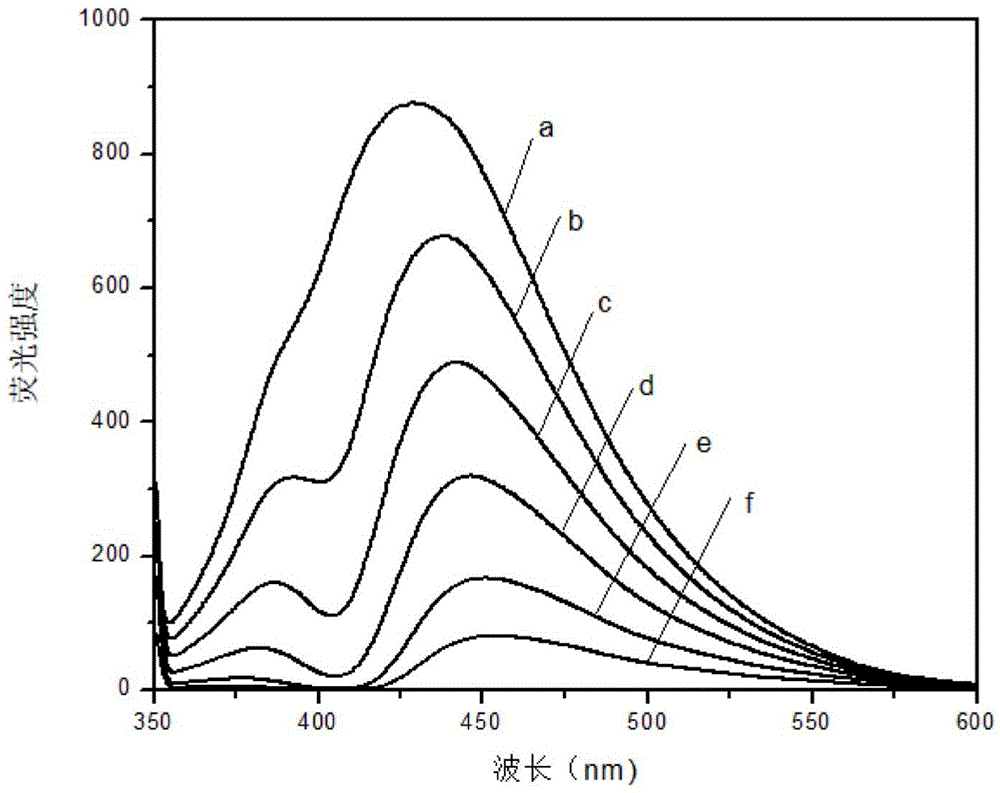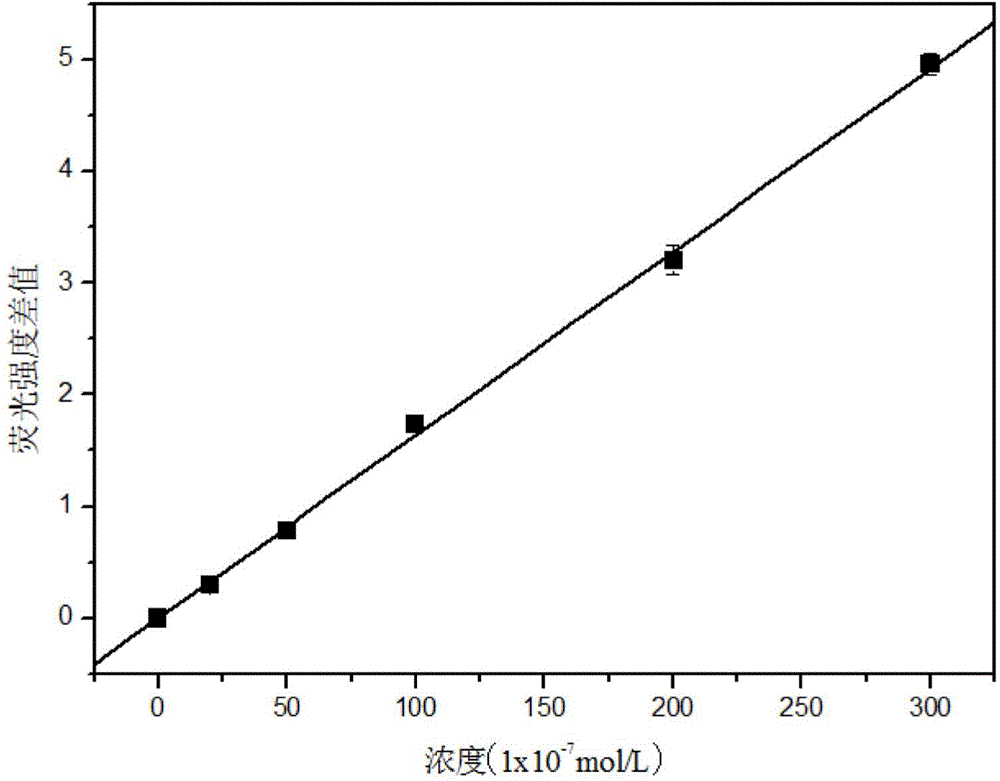Method for detecting concentration of ferrohemoglobin by using fluorescent carbon dot probe
A technology of hemoglobin concentration and fluorescent carbon dots, which is applied in the field of detection of hemoglobin concentration using fluorescent carbon dot probes, to achieve the effects of good biocompatibility, easy-to-obtain raw materials, and low price
- Summary
- Abstract
- Description
- Claims
- Application Information
AI Technical Summary
Problems solved by technology
Method used
Image
Examples
Embodiment 1
[0034] 1. Synthesis of fluorescent carbon dots
[0035] Fluorescent carbon dots were synthesized by microwave heating, using polyethylene glycol with a molecular weight of 1500, glycerol and serine as raw materials: 1.0 g of polyethylene glycol with a molecular weight of 1500 and 15 mL of glycerin were stirred and placed in a microwave reactor at 140 ° C for high temperature reaction After 15 minutes, when the test tube was cooled to 50°C, 1.0 g of serine was added, and the temperature was raised to 180°C for 10 minutes of microwave reaction. The prepared sample was injected into a dialysis bag with a molecular weight of 1000 for dialysis and then evaporated and concentrated for 24 hours to obtain 300 mL of dialysis The dialysate was rotary evaporated at a constant temperature of 60°C for one hour, and finally 260 mL of fluorescent carbon dots were obtained. The quantum yield of the above fluorescent carbon dots is about 13% by using quinine sulfate as a standard substance.
...
Embodiment 2
[0043] A method for detecting hemoglobin concentration using a fluorescent carbon dot probe, comprising:
[0044]Step 1, preparing standard solutions of hemoglobin containing fluorescent carbon dots in different concentrations, detecting the fluorescence intensity of the standard solution, obtaining the fluorescence spectrum of the standard solution, and establishing the fluorescence intensity of the standard solution with a hemoglobin concentration of zero and all standard solutions The linear relationship between the difference of the fluorescence intensity of the solution and the concentration of hemoglobin;
[0045] Step 2: Prepare a sample solution of hemoglobin containing fluorescent carbon dots, detect the fluorescence intensity of the sample solution, and determine the concentration of hemoglobin in the sample solution through the linear relationship.
[0046] In the method for detecting hemoglobin concentration using fluorescent carbon dot probes, the preparation meth...
PUM
 Login to View More
Login to View More Abstract
Description
Claims
Application Information
 Login to View More
Login to View More - R&D
- Intellectual Property
- Life Sciences
- Materials
- Tech Scout
- Unparalleled Data Quality
- Higher Quality Content
- 60% Fewer Hallucinations
Browse by: Latest US Patents, China's latest patents, Technical Efficacy Thesaurus, Application Domain, Technology Topic, Popular Technical Reports.
© 2025 PatSnap. All rights reserved.Legal|Privacy policy|Modern Slavery Act Transparency Statement|Sitemap|About US| Contact US: help@patsnap.com


